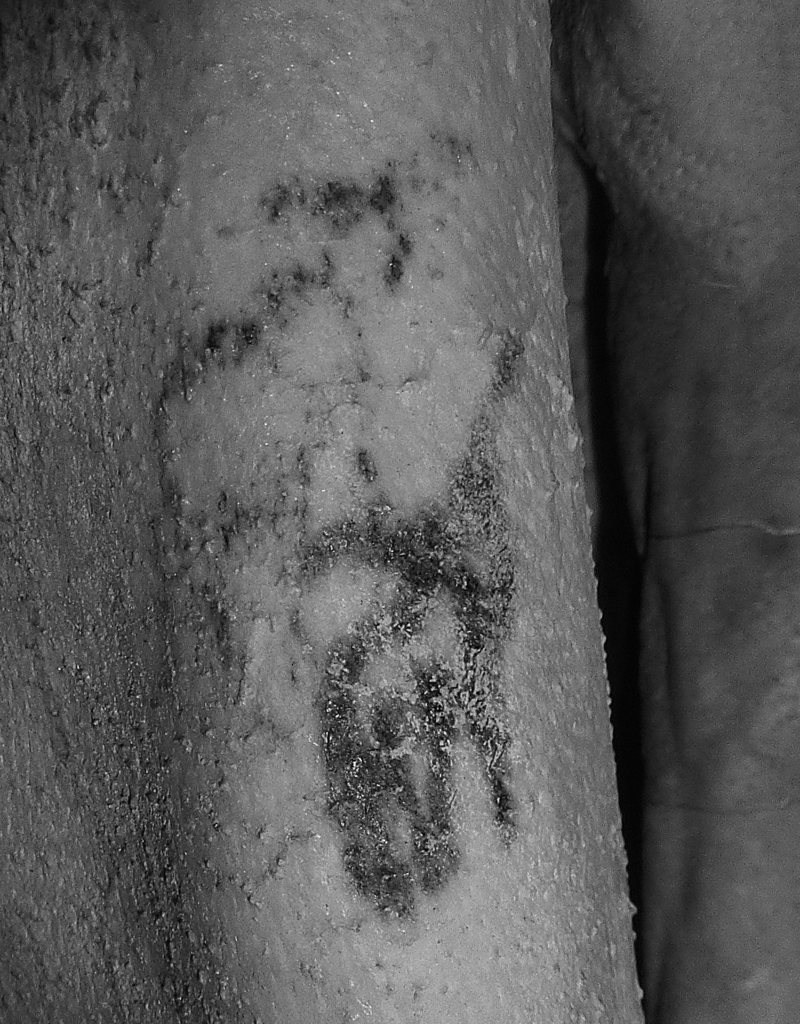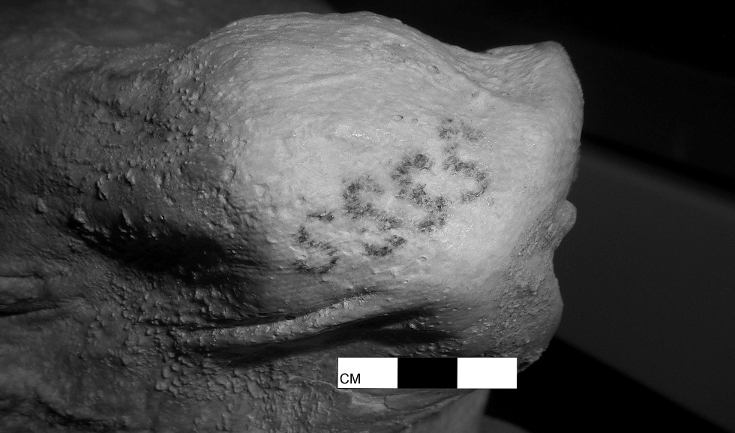
The art of tattoing is really, really old, according to a new study of some Egyptian mummified bodies that date back to around 3,000 B.C.E.
The mummies -- accidental ones, people whose bodies were buried in sand that nicely prevented rot -- have been in the British Museum for a long time, but only recently have their tattoos come under scholarly examination.
It turns out that the hot tattoo for women back then was a curious "S" shape, while for men it was ... a sheep.
Sheep? As Atlas Obscura explains:
While a sheep might not seem particularly fierce, bagging a barbary sheep (Ammotragus lervia) with just a bow and arrow—or more likely trapping one, considering the speed and precipice climbing abilities of the animals—was the ultimate in ancient Egyptian big game hunting. The bull is a more obvious symbol of power, and one that would later serve as an important icon of royal authority in Egypt. The woman has two tattoos on her upper right arm and shoulder: a vertical line with angled top (possibly a short staff or throwstick) and a series of S-shapes. Taken alone, this new evidence for tattooing arts in early Egypt is interesting, but within the larger context of Egyptian art from between 3500 and 3100 B.C., it is remarkable. [snip]No group had to hunt a barbary sheep or a hippopotamus to survive—but a successful capture or kill of such an animal revealed exceptional hunting skills. Perhaps it is these skills that the man in the British Museum sought to immortalize through the combination of an animal of power—the bull—and an animal whose capture symbolized hunting prowess—the barbary sheep. The style of the man’s tattoos is very similar to what we see in contemporaneous rock art, and in an Egyptian context, this is not surprising, since hieroglyphic texts can use the same verb to refer both to carving into stone and tattooing a human body.
As for the enigmatic "S" shapes on the women? It's hard to know precisely what they mean, but they resemble similar "S" shapes on ornamental ceramic urns that were buried with the dead. On those vessels appeared women who "appear to be ritualists whose performances and gestures accompanied the ritual slaughter of desert game, translating the power of the living creatures into the provisions consumed by gods and humans." This is what they looked like: 
So basically, the tattoos of antiquity were regarded as a) artistic, b) of deep personal meaning, and c) badass, which pretty much tracks with our contemporary era.
(Photos via the British Museum)


